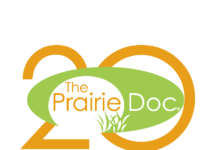By: Kristen Fischer
- A new study finds that even if you’ve never worked out before, you still have the same ability as a world-class athlete to build muscle.
- But experts caution that a gym novice may want to start off slowly to avoid injury.
- Additionally, even small amounts of exercise can make a big difference to your health.
When he was 70, Jim Owen realized his successful but sedentary career on Wall Street was impairing his health. That was when Owen, who turns 79 next month, began exercising.
He chronicled his journey as an older person reclaiming his physical fitness in “Just Move! A New Approach to Fitness After 50.”
Now, a new study in the journal Frontiers in Physiology backs up what Owen witnessed firsthand: Even if you’ve never worked out regularly and are older, your body has the same ability to build muscle mass.
A team at the University of Birmingham in the United Kingdom compared the ability of men to build muscle mass. They looked at two groups: People older than 60 who exercised at least twice a week for at least 20 years, and those who didn’t have a consistent workout routine.
Participants had a muscle biopsy 48 hours before consuming an isotope tracer drink and conducting a weight training session, then another biopsy after finishing. The drink enabled the researchers to see how proteins were developing within the muscle.
Both groups had equal abilities to build muscle in response to exercise.
“Our study clearly shows that it doesn’t matter if you haven’t been a regular exerciser throughout your life: You can still derive benefit from exercise whenever you start,” said lead researcher Leigh Breen, PhD, a lecturer at the university.
“Obviously a long-term commitment to good health and exercise is the best approach to achieve whole-body health, but even starting later on in life will help delay age-related frailty and muscle weakness,” he said.
Although they’re already better off fitnesswise, the avid exercisers’ bodies synthesized protein at the same rate as the untrained individuals when it came to the specific resistance training exercise used, says Joe Masiello, a trainer and co-founder of Focus Personal Training Institute in New York City.
“Physiologically, younger subjects have a greater advantage to building muscle than older subjects,” Masiello said.
Regardless of age, progressive overload is essential to avoid plateau. That means you have to apply adequate stimulus (or exercise stress) and variation consistently to continuously build — and not just maintain — muscle.
Jason Karp, a California-based running coach at Run-Fit and REVO₂LUTION RUNNING, says the participants had results because the body reacts to physical stress at any age.
When stimulus is applied to the body, it makes adaptations to moderate the stress. Actin and myosin are the two major proteins inside muscles that are responsible for muscle contraction. They increase as we work out, building more protein so muscles get stronger.
“The process of building muscle begins the second that you ask your muscles to do something challenging and unfamiliar, whether that’s picking up a dumbbell, performing a pushup, or sprinting on a treadmill,” said Jamie Hickey, a personal trainer from Pennsylvania.
Exercise stress damages muscle cells, or fibers. As the body repairs them, they become bigger than they were before — building muscle.
In short, the experience level of the exerciser doesn’t really matter as long as the resistance or exercise is challenging.
“If the muscle is challenged, it will change,” added Tom Holland, an exercise physiologist and certified sports nutritionist from Connecticut.
“In the beginning weeks of starting a new workout routine, the majority of strength gains aren’t actually a result of this muscle protein synthesis and hypertrophy. Rather, they are a result of the body’s neurological system learning when and how to fire the needed muscle cells,” Hickey said.
For example, the first time you do a bench press, your arms aren’t totally in sync, and the weights may sway a bit from side to side. But by the time you perform your second or third set of that same exercise, the practice gets a little smoother, he explains.
“That’s your neurological system at work,” Hickey said.
Where should novices begin if they want to start working out regularly?
“Find where you’re starting point is and progress slowly and systematically, adding a little stress at a time over many months,” Karp said.
People new to working out may not be sure what to do to get a good workout, or may try to do too much at first. This is why consulting a doctor, working with a trainer, or both can be so beneficial.
“Many adults just don’t know where to start with strength training or exercise in general,” added Morgan Nolte, PhD, a specialist in geriatric physical therapy from Nebraska.
“They know it’s good for them but are fearful of getting hurt, especially if they have a preexisting condition — which is common in older adults — like high blood pressure, back pain, or a joint replacement,” she said.
Keep in mind differences that happen when someone in their 40s begins working out regularly compared to someone in their 60s or 70s.
A 40-year-old will be able to start at a higher intensity or do more from a cardio perspective because the maximum heart rate decreases with age. A younger person will likely have fewer health issues to work around compared to someone starting out exercising in their 60s or 70s.
That said, anyone can begin working out consistently at any age. We can all benefit from physical activity. Exercises can be modified to suit the individual, making it doable for anyone, Nolte says.
It’s very important to stress the mental benefits of exercise as well, especially for aging adults where depression is common, she adds.
“Keep it simple,” Masiello said. “Many people feel overwhelmed that they don’t know what to do, or don’t have the time, so they don’t do anything at all. They do not have to spend an hour in the gym, do a host of complicated exercises, or purchase complicated fitness trackers.”
Consistency is the most important thing to build an exercise habit, he adds. Once you’re used to incorporating exercise into your day, you can adjust the duration, intensity, and type accordingly.
Holland agrees that starting slowly is key.
“You need not go to the gym or do hourlong sessions, either,” Holland said. “Minutes matter. Studies have shown that three 10-minute bouts of exercise have the same benefits as one continuous 30-minute session.”
“It’s absolutely never too late to start,” Masiello said. “People who begin exercising later in life can’t believe how much better they look and feel. Especially when chronic pains they’ve had for years disappear. Exercise is medicine.”
(Healthline)
www.healthline.com




